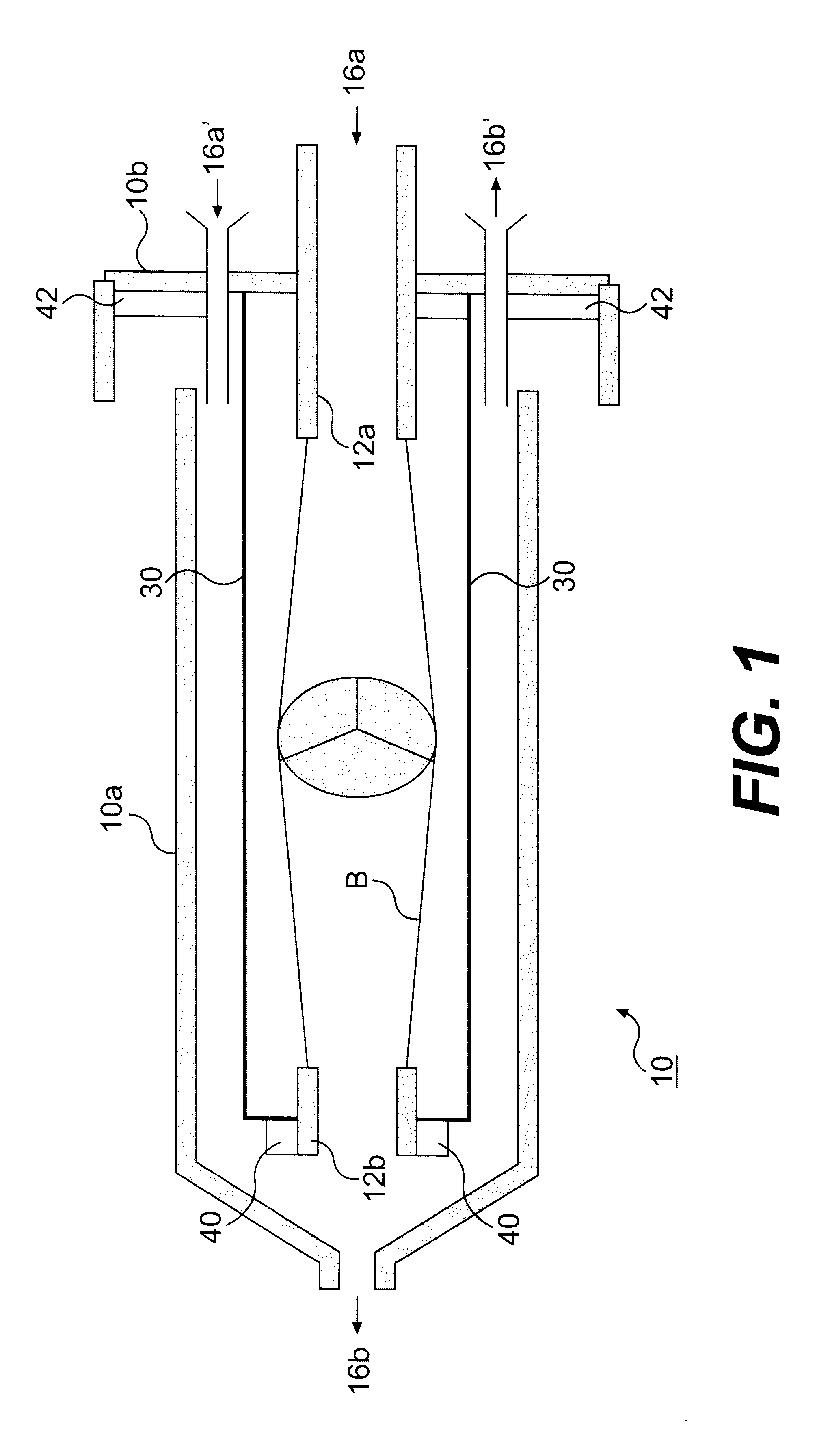Method for populating substrates with biological cells and populating devices that can be used therefor
- Summary
- Abstract
- Description
- Claims
- Application Information
AI Technical Summary
Benefits of technology
Problems solved by technology
Method used
Image
Examples
Embodiment Construction
FIG. 1 shows a first example embodiment of the invention in a longitudinal section in an exploded presentation. This is a cylindrical inoculating device designed for inoculating a tubular substrate, designated by B in the drawing. The holder 10 comprises two holder parts 10a, 10b, which are not plugged together in the drawing. The liquid inlet 16a also forms, on the inside, of the device, a first ring-shaped or tubular holder 12a for the substrate. The second ring-shaped holder 12b is connected by rods 30 to the container cover 10b, so that it is firmly connected mechanically to the first holder 12a. The holders 12a and 12b together make up the holding device for the tubular substrate B, a heart valve. When the holder parts 10a and 10b are pushed together, the holder 12b seals against the inner wall of holder part 10a with the sealing ring 40 and the outlet 16b is sealed off. At the same time, the holder 10, made of the holder parts 10a and 10b, is closed and sealed with the seal 42...
PUM
 Login to View More
Login to View More Abstract
Description
Claims
Application Information
 Login to View More
Login to View More - R&D
- Intellectual Property
- Life Sciences
- Materials
- Tech Scout
- Unparalleled Data Quality
- Higher Quality Content
- 60% Fewer Hallucinations
Browse by: Latest US Patents, China's latest patents, Technical Efficacy Thesaurus, Application Domain, Technology Topic, Popular Technical Reports.
© 2025 PatSnap. All rights reserved.Legal|Privacy policy|Modern Slavery Act Transparency Statement|Sitemap|About US| Contact US: help@patsnap.com



